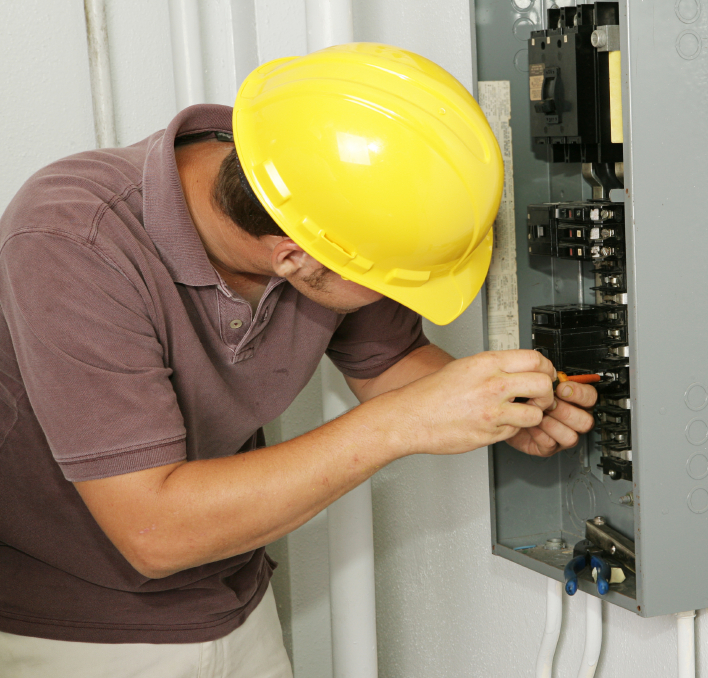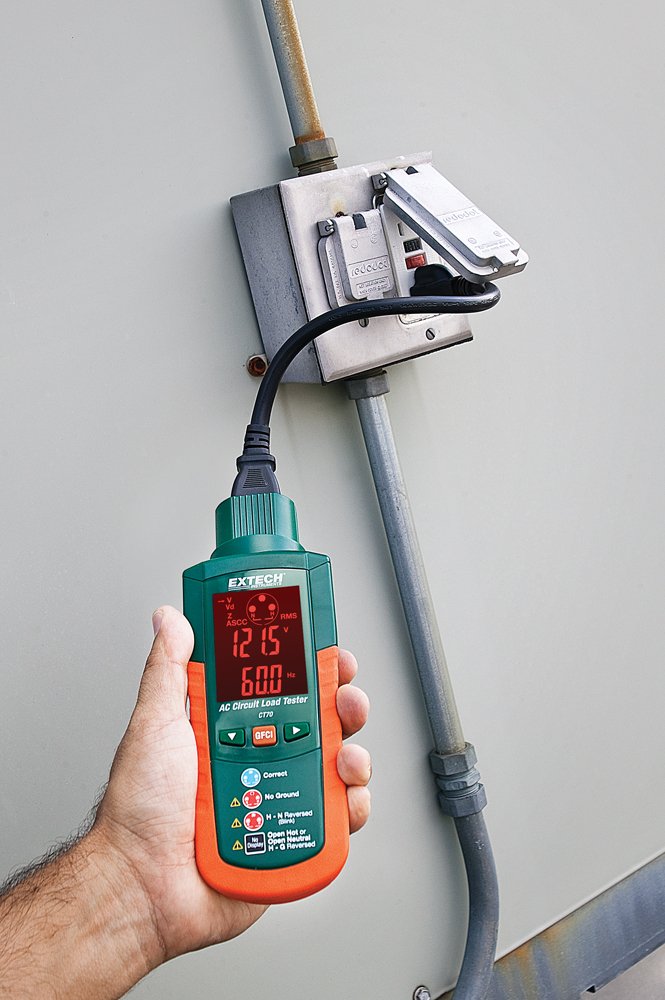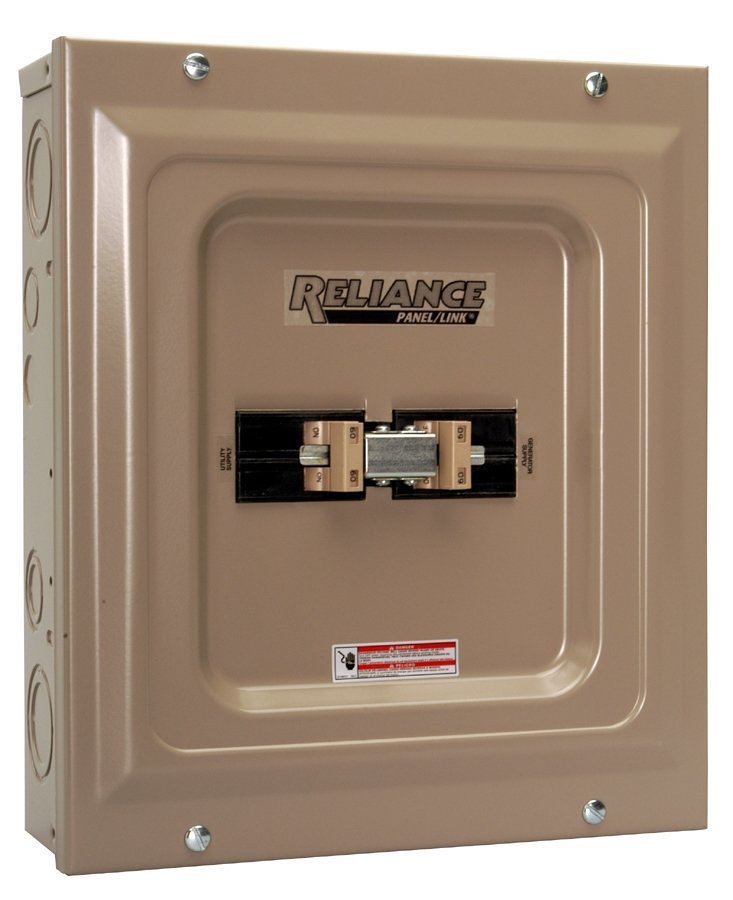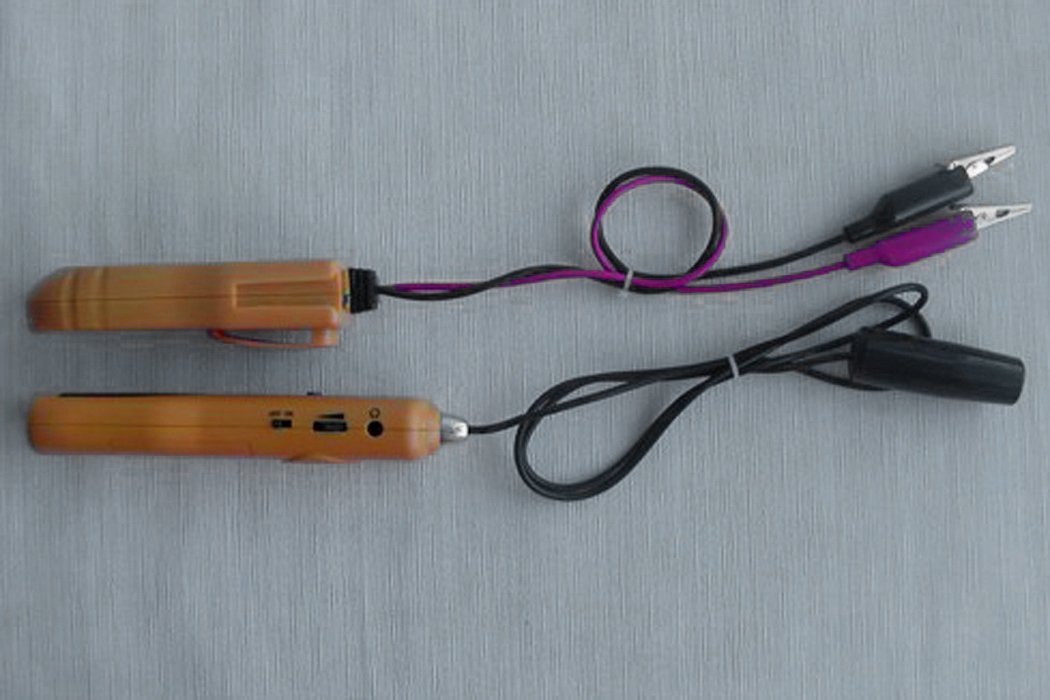An electrician is a tradesperson specializing in electrical wiring of buildings, stationary machines and related equipment. Electricians may be employed in the installation of new electrical components or the maintenance and repair of existing electrical infrastructure. Electricians may also specialize in wiring ships, airplanes, and other mobile platforms, as well as data and cable.

Terminology
Electricians were originally people who demonstrated or studied the principles of electricity, often electrostatic generators of one form or another.
In the United States, electricians are divided into two primary categories: linemen, who work on electric utility company distribution systems at higher voltages, and wiremen, who work with the lower voltages utilized inside buildings. Wiremen are generally trained in one of five primary specialties: commercial, residential, light industrial, industrial, and low-voltage wiring, more commonly known as Voice-Data-Video, or VDV. Other sub-specialties such as control wiring and fire-alarm may be performed by specialists trained in the devices being installed, or by inside wiremen.
Electricians are trained to one of three levels: Apprentice, Journeyman, and Master Electrician. Apprentices in the US and Canada are working to learn the electrical trade. They generally take several hundred hours of classroom instruction and are contracted to follow apprenticeship standards for a period of between three and six years, during which time they are paid as a percentage of the Journeyman's pay. Journeymen are electricians who have completed their Apprenticeship and who have been found by the local, State, or National licensing body to be competent in the electrical trade. Master Electricians have performed well in the trade for a period of time, often seven to ten years, and have passed an exam to demonstrate superior knowledge of the National Electrical Code, or NEC.
Service electricians are tasked to respond to requests for isolated repairs and upgrades. They have considerable skills troubleshooting wiring problems, installing wiring in existing buildings, and making repairs. Construction electricians primarily focus on larger projects, such as installing all new electrical system for an entire building, or upgrading an entire floor of an office building as part of a remodeling process. Other specialty areas are marine electricians, research electricians and hospital electricians. "Electrician" is also used as the name of a role in stagecraft, where electricians are tasked primarily with hanging, focusing, and operating stage lighting. In this context, the Master Electrician is the show's chief electrician. Although theater electricians routinely perform electrical work on stage lighting instruments and equipment, they are not part of the electrical trade and have a different set of skills and qualifications from the electricians that work on building wiring.
In the film industry and on a television crew the head electrician is referred to as a Gaffer.
Electrical contractors are businesses that employ electricians to design, install, and maintain electrical systems. Contractors are responsible for generating bids for new jobs, hiring tradespeople for the job, providing material to electricians in a timely manner, and communicating with architects, electrical and building engineers, and the customer to plan and complete the finished product.
House Electrician Video
Training and regulation of trade
Many jurisdictions have regulatory restrictions concerning electrical work for safety reasons due to the many hazards of working with electricity. Such requirements may be testing, registration or licensing. Licensing requirements vary between jurisdictions.
Australia
An electrician's license entitles the holder to carry out all types of electrical installation work in Australia without supervision. However, to contract, or offer to contract, to carry out electrical installation work, a licensed electrician must also be registered as an electrical contractor. Under Australian law, electrical work that involves fixed wiring is strictly regulated and must almost always be performed by a licensed electrician or electrical contractor. A local electrician can handle a range of work including air conditioning, data, and structured cabling systems, home automation & theatre, LAN, WAN and VPN data solutions, light fittings and installation, phone points, power points, safety inspections and reports, safety switches, smoke alarm installation, inspection and certification and testing and tagging of electrical appliances.
Electrical licensing in Australia is regulated by the individual states. In Western Australia the Department of Commerce tracks licensee's and allows the public to search for individually named/licensed Electricians.
Currently in Victoria the apprenticeship last for four years, during three of those years the apprentice attends trade school in either a block release of one week each month or one day each week. At the end of the apprenticeship the apprentice is required to pass three examinations, one of which is theory based with the other two practically based. Upon successful completion of these exams, providing all other components of the apprenticeship are satisfactory, the apprentice is granted an A Class licence on application to Energy Safe Victoria (ESV).
An A Class electrician may perform work unsupervised but is unable to work for profit or gain without having the further qualifications necessary to become a Registered Electrical Contractor (REC) or being in the employment of a person holding REC status. However, some exemptions do exist.
In most cases a certificate of electrical safety must be submitted to the relevant body after any electrical works are performed.
Safety equipment used and worn by electricians in Australia (including insulated rubber gloves and mats) needs to be tested regularly to ensure it is still protecting the worker. Because of the high risk involved in this trade, this testing needs performed regularly and regulations vary according to state. Industry best practice is the Queensland Electrical Safety Act 2002, and requires six-monthly testing.
Canada
Training of electricians follows an apprenticeship model, taking four or five years to progress to fully qualified journeyman level. Typical apprenticeship programs consists of 80-90% hands-on work under the supervision of journeymen and 10-20% classroom training. Training and licensing of electricians is regulated by each province, however professional licenses are valid throughout Canada under Agreement on Internal Trade. An endorsement under the Red Seal Program provides additional competency assurance to industry standards. In order for individuals to become a licensed electricians, they need to have 6000 hours of practical, on the job training. They also need to attend school for 4 years and pass a provincial exam. This training enables them to become journeyman electricians. Furthermore, in British Columbia, an individual can go a step beyond that and become a "FSR", or field safety representative. This credential gives the ability to become a licensed electrical contractor and to pull permits. The various levels of field safety representatives are A,B and C. The only difference between each class is that they are able to do increasingly higher voltage and current work.
Restricted electrical licenses are also issued for specializations such as motor winder, appliance repair, audio/visual installation and HVAC installation.
United Kingdom
Competency standards in the UK are defined by the Sector Skills council Summit Skills. Qualifications certificated by awarding organisations such as City and Guilds and EAL are based on these National Occupational Standards. Once qualified and demonstrating the required level of competence an Electrician can register with the JIB (Joint industry Board) for an Electrotechnical Certification Scheme (ECS) card. Electrical competence is required at Level 3 to practice as an electrician in the UK. The electrical industry is one of the few that require a trade test to be achieved prior to being fully qualified. This is known as the AM2.
Electricians can demonstrate further competence by studying further qualifications in Design and Verification of Electrical Installations or in the Test and Inspection of Electrical Installations. These qualifications can be listed on the reverse of the JIB card.
The Electricity at Work Regulations are the statutory document that covers electrical installations. Further information is provided in the non-statutory document BS7671 - Requirements for Electrical Installations otherwise known as the Wiring Regulations currently (2013) in their 17th Edition. Installations that comply with BS7671 are deemed to have met the EAWR. Electrical Installation in domestic properties is governed by Part P of the Building Regulations and electricians have to register certain aspects of their work in domestic properties with the local building control authority.
With the exception of the work described in Part P of the Building Regulations there are no laws that prevent anyone from carrying out electrical work in the UK. A possible result of this is that during 2010/11 and in 2011/12 there were 3,822 domestic electrical fires in Great Britain, resulting in 14 deaths. Organisations such as the Electrical Safety Council are working hard to educate the public not to use electricians who are not fully qualified or competent and to check the ElectricSafe register to ensure an Electrician has been deemed competent.
United States
The United States does not offer nationwide licensing and electrical licenses are issued by individual states. There are variations in licensing requirements, however, all states recognize three basic skill categories: level electricians. Journeyman electricians can work unsupervised provided that they work according to a master's direction. Generally, states do not offer journeyman permits, and journeyman electricians and other apprentices can only work under permits issued to a master. Apprentices may not work without direct supervision.
Before electricians can work unsupervised, they are usually required to serve an apprenticeship lasting from 3 to 5 years under the general supervision of a Master Electrician and usually the direct supervision of a Journeyman Electrician. Schooling in electrical theory and electrical building codes is required to complete the apprenticeship program. Many apprenticeship programs provide a salary to the apprentice during training. A Journeyman electrician is a classification of licensing granted to those who have met the experience requirements for on the job training (usually 4080 to 6120 hours) and classroom hours (about 144 hours). Requirements include a two-year relevant degree, completion of two to six years of apprenticeship training, and passing a licensing exam.}.
Reciprocity
An electrician's license is valid for work in the state where the license was issued. In addition, many states recognize licenses from other states, sometimes called interstate reciprocity participation, although there can be conditions imposed. For example, California reciprocates with Arizona, Nevada, and Utah on the condition that licenses are in good standing and have been held at the other state for five years. Nevada reciprocates with Arizona, California, and Utah. Maine reciprocates with New Hampshire and Vermont at the master level, and the state reciprocates with New Hampshire, North Dakota, Idaho, Oregon, Vermont, and Wyoming at the journeyman level.

Tools
Electricians use a range of hand and power tools and instruments.
Some of the more common tools are:
- Pipe and tube bender
- voltage indicators
- Lineman's pliers: Heavy-duty pliers for general use in cutting, bending, crimping and pulling wire.
- Diagonal pliers (also known as side cutters or Dikes): Pliers consisting of cutting blades for use on smaller gauge wires, but sometimes also used as a gripping tool for removal of nails and staples.
- Needle-nose pliers: Pliers with a long, tapered gripping nose of various size, with or without cutters, generally smaller and for finer work (including very small tools used in electronics wiring).
- Wire strippers: Plier-like tool available in many sizes and designs featuring special blades to cut and strip wire insulation while leaving the conductor wire intact and without nicks. Some wire strippers include cable strippers among their multiple functions, for removing the outer cable jacket.
- Cable cutters: Highly leveraged pliers for cutting larger cable.
- Rotosplit: A brand-name tool designed to assist in breaking the spiral jacket of metallic-jacketed cable (MC cable).
- Multimeter: An instrument for electrical measurement with multiple functions. It is available as analog or digital display. Common features include: voltage, resistance, and current. Some models offer additional functions.
- Step-bit: A metal-cutting drill bit with stepped-diameter cutting edges to enable convenient drilling holes in pre-set increments in stamped/rolled metal up to about 1.6mm(1/16 inch) thick.; for example, to create custom knock-outs in a breaker panel or junction box.
- Cord, rope or fish tape. Used to manipulate cables and wires through cavities. The fishing tool is pushed, dropped, or shot into the installed raceway, stud-bay or joist-bay of a finished wall or in a floor or ceiling. Then the wire or cable is attached and pulled back.
- Crimping tools: Used to apply terminals or splices. These may be hand or hydraulic powered. Some hand tools have ratchets to insure proper pressure. Hydraulic units achieve cold welding, even for aluminum "locomotive" [many fine strands] cable.
- Insulation resistance tester: Commonly referred to as a Megger. Insulation testers apply several hundred to several thousand volts to cables and equipment to determine the insulation resistance value.
- Knockout punch: For punching holes into sheet metal to run wires or conduit.
- Other general-use tools with applications in electric power wiring include screwdrivers, hammers, reciprocating saws, drywall saws, metal punches, flashlights, chisels, adjustable slip-joint pliers and drills.
- Test light
- Ground fault indicator tester

Safety
In addition to the workplace hazards generally faced by industrial workers, electricians are also particularly exposed to injury by electricity. An electrician may experience electric shock due to direct contact with energized circuit conductors or due to stray voltage caused by faults in a system. An electric arc exposes eyes and skin to hazardous amounts of heat and light. Faulty switchgear may cause an arc flash incident with a resultant blast. Electricians are trained to work safely and take many measures to minimize the danger of injury. Lockout and tagout procedures are used to make sure that circuits are proven to be de-energized before work is done. Limits of approach to energized equipment protect against arc flash exposure; specially designed flash-resistant clothing provides additional protection; grounding (earthing) clamps and chains are used on line conductors to provide a visible assurance that a conductor is de-energized. Personal protective equipment provides electrical insulation as well as protection from mechanical impact; gloves have insulating rubber liners, and work boots and hard hats are specially rated to provide protection from shock. If a system cannot be de-energized, insulated tools and special live-line training are used; even high-voltage transmission lines can be repaired while energized, when necessary.
Electrical workers, which includes electricians, accounted for 34% of total electrocutions of construction trades workers in the United States between 1992-2003.

Working conditions
Working conditions for electricians vary by specialization. Generally an electrician's work is physically demanding such as climbing ladders and lifting tools and supplies. Occasionally an electrician must work in a cramped space or on scaffolding, and may frequently be bending, squatting or kneeling, to make connections in awkward locations. Construction electricians may spend much of their days in outdoor or semi-outdoor loud and dirty work sites. Industrial electricians may be exposed to the heat, dust, and noise of an industrial plant. Power systems electricians may be called to work in all kinds of adverse weather to make emergency repairs.

Trade organizations
Some electricians are union members and work under their union's policies.
Australia
Electricians can choose to be represented by the Electrical Trade Union (ETU). Electrical Contractors can be represented by the National Electrical & Communications Association or Master Electricians Australia.
North America
Some electricians are union members. Some examples of electricians' unions are: International Brotherhood of Electrical Workers; Canadian Union of Public Employees; International Union of Electronic, Electrical, Salaried, Machine, and Furniture Workers; International Association of Machinists and Aerospace Workers; United Auto Workers; and the United Steelworkers.
The International Brotherhood of Electrical Workers provides its own apprenticeships through its National Joint Apprenticeship and Training Committee njatc.org and the National Electrical Contractors Association necanet.org. Many merit shop training and apprenticeship programs also exist, including those offered by such as trade associations as Associated Builders and Contractors and Independent Electrical Contractors. These organizations provide comprehensive training, in accordance with U.S. Department of Labor regulations.
http://www.bls.gov/k12/build06.htm.
UK/Ireland
In the U.K., electricians are represented by several unions including Unite the Union
In the Rep. of Ireland there are two self-regulation/self certification bodies RECI Register of Electrical Contractors of Ireland and ECSSA.
Are You Looking for Products
Here some products related to "Electrician".
Greenlee TK-30 Basic Elec..
Extech CT70 AC Circuit Lo..
Amazon.com : Reliance Con..
Underground Cable Wire Lo..
Get these at Amazon.com* amzn.to is official short URL for Amazon.com, provided by Bitly
Source of the article : here






3 komentar
Spot on with this article, I really think this website needs more attention. I'll probably be back to read more, thanks for the info.
domestic electrician
Your Post is very useful, I am truly happy to post my note on this blog . It helped me with ocean of awareness so I really consider you will do much better in the future.
Prepaid Lights
EmoticonEmoticon